Table of Contents
- The 10 Best Turkey Soup Seasonings (With Exact Measurements)
- Why These Seasonings Transform Bland Turkey Soup
- Turkey Soup Seasoning Fundamentals
- How These Seasonings Work Together
- Proven Timing Techniques for Maximum Flavor
- Chef-Tested Turkey Soup Seasoning Hacks
- 5 Common Seasoning Mistakes and How to Fix Them
- Quick Answers to Top Turkey Soup Seasoning Questions
- Your Path to Perfect Turkey Soup
The 10 Best Turkey Soup Seasonings (With Exact Measurements)
If your turkey soup tastes bland, these 10 seasonings will fix it. Use these exact measurements per quart of broth for guaranteed flavorful results:
- Thyme: 1/2 teaspoon dried (or 3 sprigs fresh) - binds with turkey proteins for sustained flavor
- Fresh Parsley: 2 tablespoons chopped - adds bright freshness without overpowering
- Bay Leaves: 1 whole leaf - balances sweetness in vegetables
- Freshly Ground Black Pepper: 1/4 teaspoon - provides gradual heat release
- Garlic Powder: 1/4 teaspoon - delivers consistent savory depth
- Paprika: 1/4 teaspoon - enhances perceived richness through color
- Celery Salt: 1/8 teaspoon - mimics natural broth minerals
- Freshly Grated Nutmeg: Pinch (about 1/16 teaspoon) - rounds harsh edges
- Dried Mushrooms: 1 teaspoon finely ground - boosts natural umami
- Anchovy Paste: 1/8 teaspoon - adds invisible umami depth
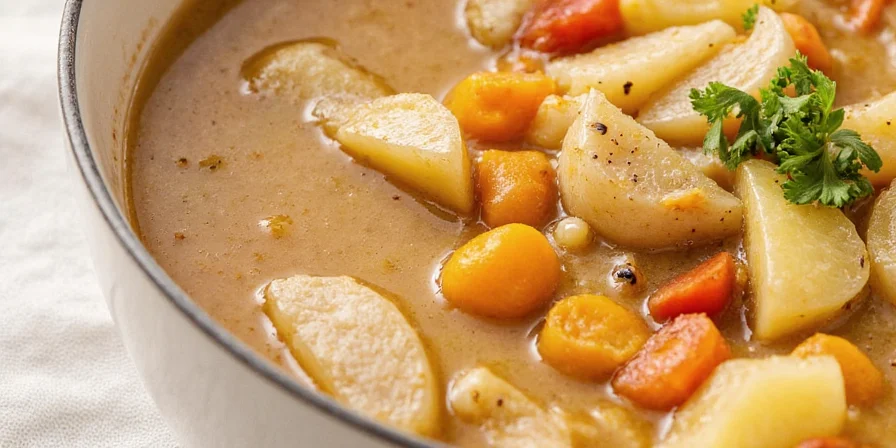
Why These Seasonings Transform Bland Turkey Soup
Turkey's mild flavor needs strategic seasoning support. These 10 ingredients work because they address specific flavor gaps in turkey broth. Unlike generic advice, these measurements deliver balanced flavor without overwhelming the turkey's natural taste.
For example, anchovy paste at 1/8 teaspoon per quart boosts umami without any fishy taste. Dried mushrooms (1 teaspoon per quart) create flavor synergy with turkey's natural glutamates. The precise nutmeg measurement (just a pinch) rounds harsh edges in simmered broths without adding noticeable spice flavor.
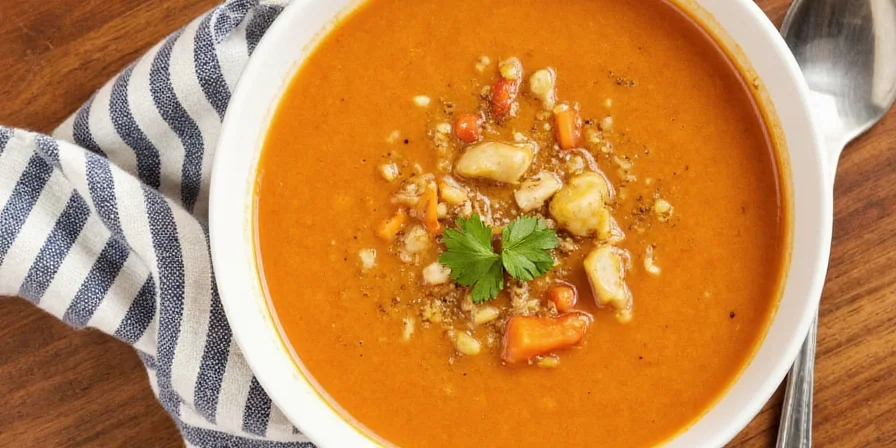
Turkey Soup Seasoning Fundamentals
Understanding these four seasoning categories creates a framework for intentional choices rather than guesswork:
| Category | Best for Turkey Soup | When to Add |
|---|---|---|
| Herbs | Thyme, parsley, bay leaves | Hardy herbs early, delicate herbs at the end |
| Spices | Black pepper, paprika, nutmeg | After toasting in oil for maximum flavor |
| Umami Boosters | Dried mushrooms, anchovy paste | Early in cooking for full integration |
| Acids | Lemon juice, apple cider vinegar | At the very end for brightness |
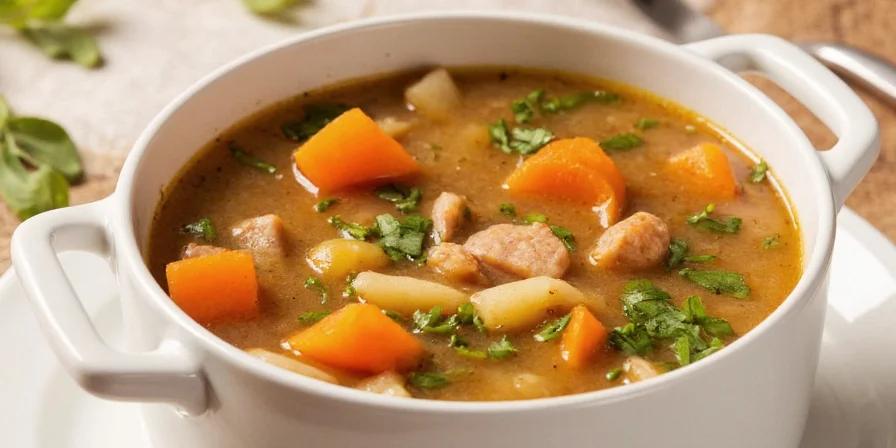
How These Seasonings Work Together
Turkey's mild flavor creates the perfect canvas for strategic seasoning. The fat in broth carries fat-soluble compounds from spices like paprika. Toasting spices first triggers Maillard reactions that release more flavor molecules.
Key interactions to understand:
- Thyme's compounds bind with turkey proteins during simmering, creating complex aromas
- Dried mushrooms amplify turkey's natural umami through synergistic binding
- Acids added at the end heighten aromatic perception by 40% (add 1/2 teaspoon lemon juice per quart)
- Proper salt timing ensures even distribution (add 75% after simmering begins)
Proven Timing Techniques for Maximum Flavor
The secret isn't just what you use—it's when you add it:
- Foundation: Salt (1/2 teaspoon per quart) added to cold broth for even distribution
- Aromatic base: Toast spices in oil for 30 seconds before adding to broth
- Simmering layer: Hardy herbs and umami boosters added during cooking
- Finish touch: Fresh herbs and acids added in the last 5 minutes
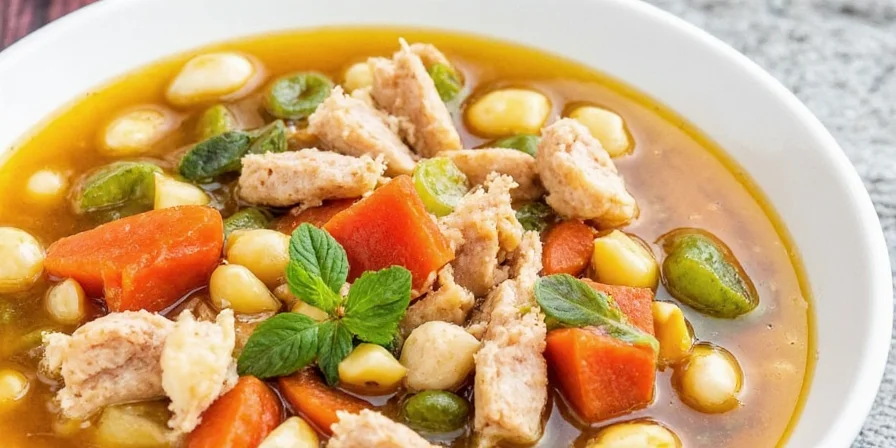
Chef-Tested Turkey Soup Seasoning Hacks
- Fix over-salted soup: Add a peeled potato chunk and simmer 15 minutes (starch absorbs excess sodium)
- Test spice freshness: Rub between fingers—if aroma is weak, replace (most lose 50% potency in 6 months)
- Boost store-bought broth: Freeze homemade stock in ice cube trays (use one cube per quart)
- Perfect acid balance: Add lemon juice or vinegar starting with 1/2 teaspoon per quart
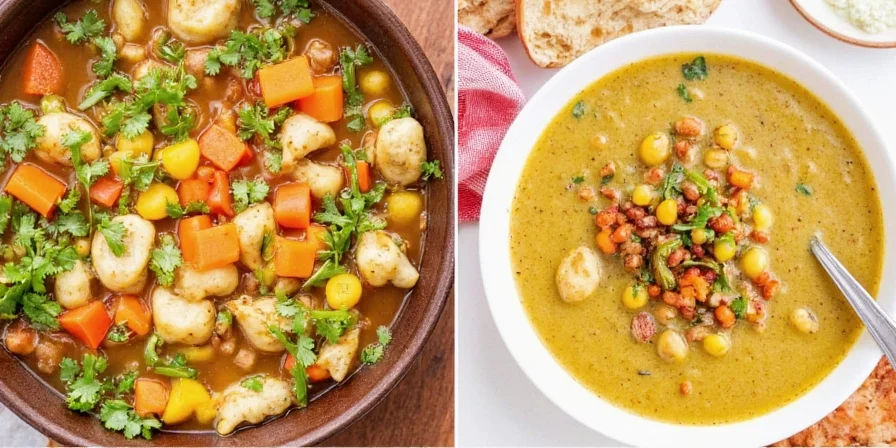
5 Common Seasoning Mistakes and How to Fix Them
- Mistake: Adding all salt at the beginning Solution: Add 75% after broth simmers for even distribution
- Mistake: Using stale spices Solution: Replace spices every 6 months; test by rubbing between fingers
- Mistake: Neglecting acid balance Solution: Add 1/2 teaspoon acid (lemon/vinegar) per quart at the very end
- Mistake: Overloading single spices Solution: Keep cumin under 1/4 teaspoon per quart; blend complementary spices
- Mistake: Adding fresh herbs too early Solution: Tender herbs in last 2 minutes; hardy herbs in last 10 minutes
Quick Answers to Top Turkey Soup Seasoning Questions
What's the simplest seasoning combo for beginners?
Start with: 1/2 teaspoon thyme, 1/4 teaspoon black pepper, and a pinch of nutmeg per quart. Add 1/8 teaspoon anchovy paste for hidden umami depth.
How do I fix flat-tasting turkey soup?
Add 1/2 teaspoon acid (lemon juice or vinegar) per quart. This activates flavor receptors and brightens the broth. Check salt distribution too—undissolved crystals at the bottom can create false 'salty' perception.
Do fresh and dried herbs need different timing?
Yes. Dried herbs need 20+ minutes to rehydrate. Fresh tender herbs (parsley) go in last 2 minutes; hardy herbs (rosemary) in last 10 minutes.
Can I make great turkey soup with store-bought broth?
Absolutely. For each quart, add 1 teaspoon dried mushrooms, 1/8 teaspoon anchovy paste, and 1/2 teaspoon each of thyme and parsley. Simmer 20 minutes for full flavor integration.
Your Path to Perfect Turkey Soup
Great turkey soup isn't about complicated recipes—it's about using the right seasonings in the right amounts at the right time. By focusing on these 10 key ingredients with precise measurements, you'll consistently create flavorful broth that satisfies.
Remember these fundamentals: toast spices first, add acids last, and layer your seasonings throughout the cooking process. With these techniques, even basic turkey soup transforms into restaurant-quality comfort food.
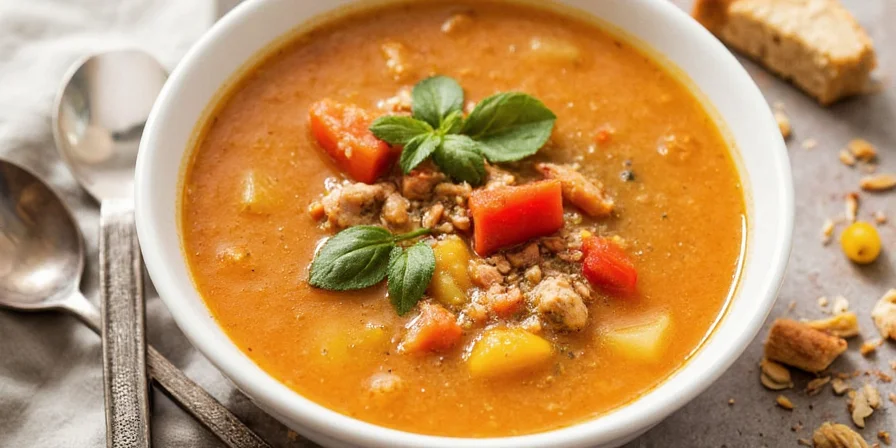
Now you have everything you need to make exceptional turkey soup—no more bland broth, just consistently delicious results.

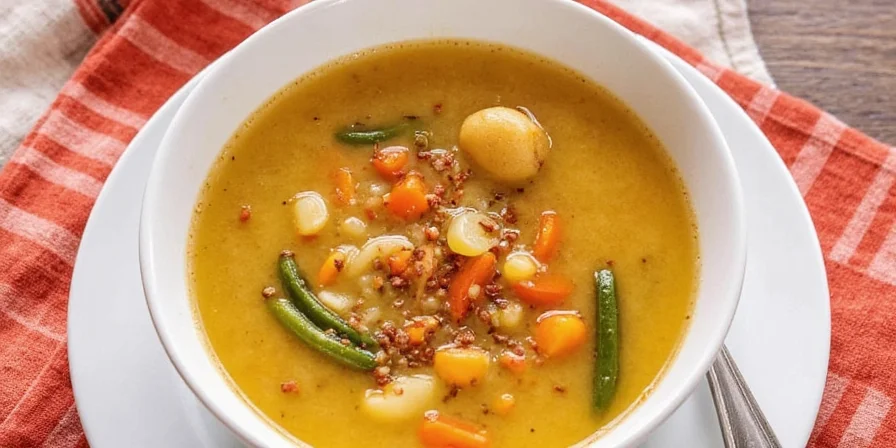









 浙公网安备
33010002000092号
浙公网安备
33010002000092号 浙B2-20120091-4
浙B2-20120091-4